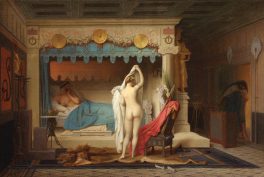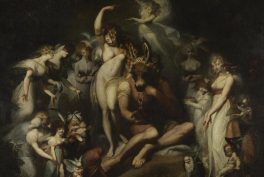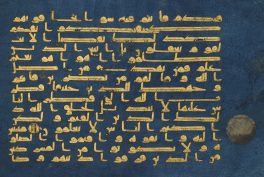Holiday time but not sure if you can afford to travel? Or do you just need something to help forget about social distancing while relaxing somewhere and not being at work? Whatever you are looking for, a good book is what you might need. Of course a book about art: you will travel through time and place and feel close to marvelously talented people.
Words of the Artist Himself: Dear Theo
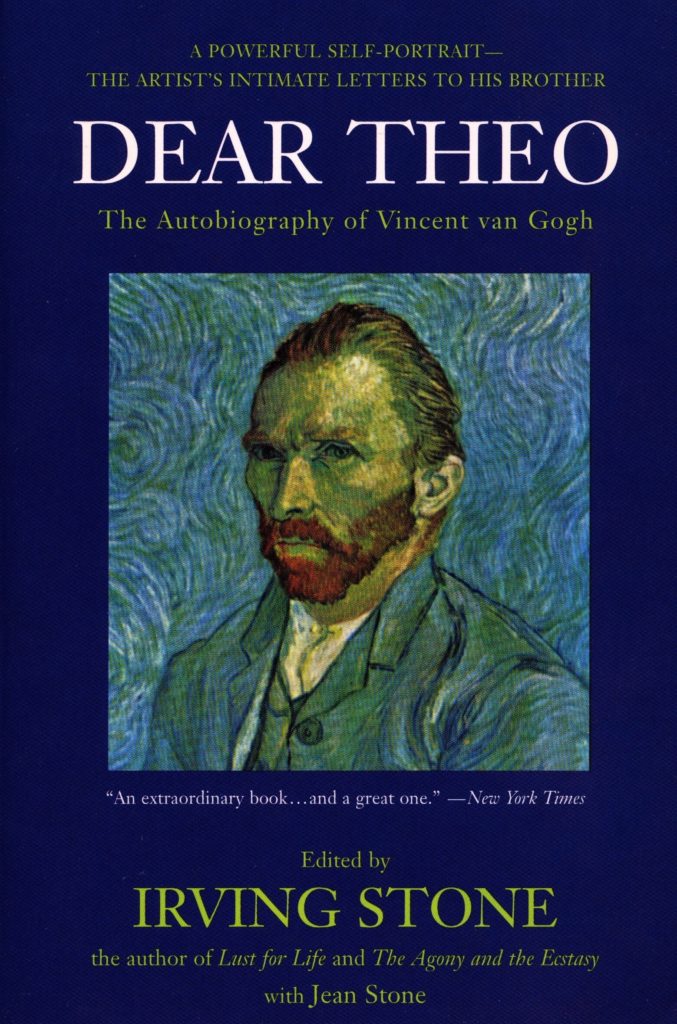
This book is the right choice if you’re searching for the direct legacy of an artist. In fact, this is a collection of Van Gogh’s letters to his brother, Theo, without commentary or novelization. They perfectly describe the inner life of the Dutch painter, with his deepest feelings and thoughts as well as his fears and his ideas about the artistic world. Just a warning: these letters should be savored slowly, like a good wine glass, to actually feel Vincent. Therefore, the volume will be a faithful companion for a few days rather than a couple hours.
The book was edited by Irving Stone, an American writer especially known for his biographical novels about famous personalities. He also wrote a novel about Van Gogh based on these letters. However, this is the book to choose if you wish to listen to the artist himself.
Biographical Novel: The Agony and the Ecstasy…
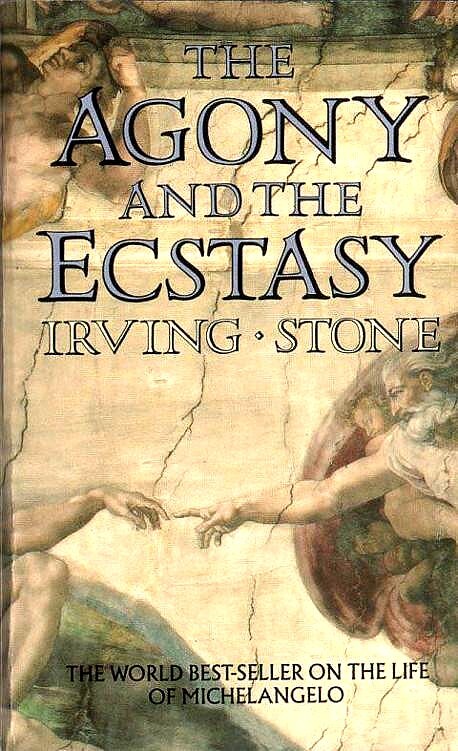
Speaking of Stone, another of his classic biographical novels has to be mentioned. This is The Agony and the Ecstasy, the narration of Michelangelo’s life from youth to death. The book is a masterpiece in which the Italian artist is described in both his full, tormented humanity and ever unsatisfied genius. The reader can learn about his interests, impetuous passions, and incredible oeuvre, in a fascinating vortex from which they will only re-emerge at the end.
However, that’s not enough. Stone also gives the reader a careful look at the life of that period, especially describing how dangerous it could be to be involved in affairs among religious and political leaders. Mysterious deaths and ambiguous accidents were commonplace. On the other hand, bright signs were also present, like other personalities and their oeuvres. In the book you can find Leonardo da Vinci, Raphael, Martin Luther, and Machiavelli!
Characters and places often seem real, thanks to Stone’s patient research throughout Italy. Moreover, like in the aforementioned book about Van Gogh, in this one Stone studied almost 500 of the artist’s personal letters. This allows the book to be very faithful to Michelangelo’s personality and attitude. The author only filled in very small gaps in the narrative with fictional events. This novel is the perfect choice if you’re looking for a deeper and more personal view into one of the world’s most famous artists.
…and The Passion of Artemisia
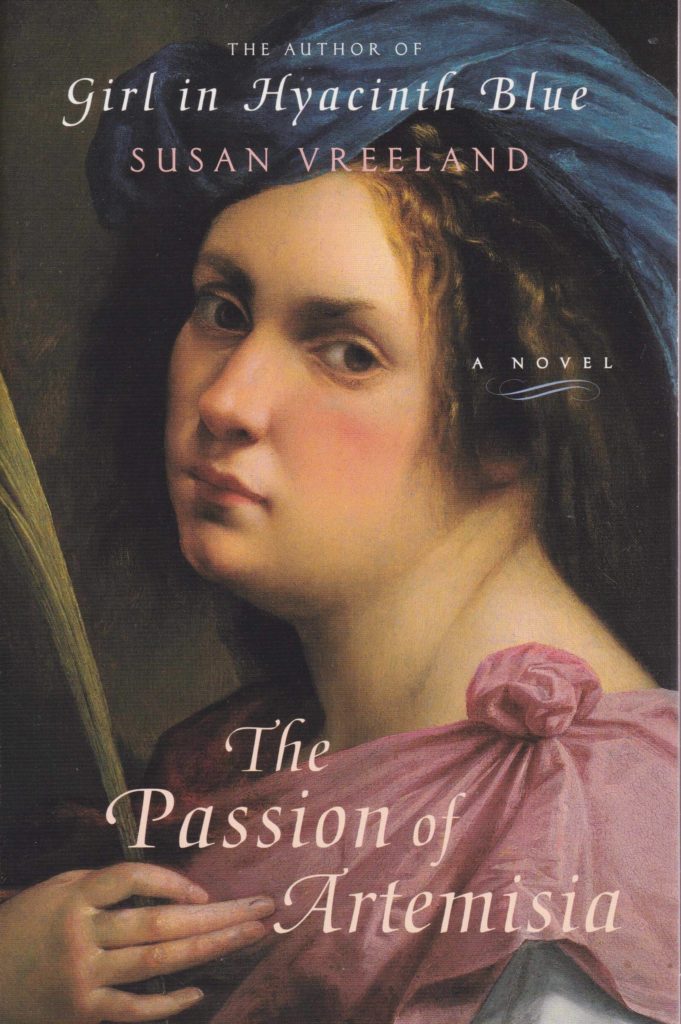
This book, by Susan Vreeland, narrates the main events in the life of the 17th century Italian feminine painter Artemisia Gentileschi, daughter of another famous painter of that time, Orazio.
This is another biographical novel, but it tells a more neglected and unusual story. Firstly, the novel portrays a professional woman artist, an extremely rare figure in the previous centuries. In addition, it is intriguing because of the modernity of the whole story. The beginning describes a trial concerning the rape of the 18-year-old woman by an artist friend of her father, Agostino Tassi. Throughout her whole lie life, Artemisia often feels the criticism and the blame of society. Nevertheless, she never gives up on her passion: Art.
The action begins in the first decade of 1600, when a woman’s honor was essential, and a daughter was her father’s property, to be given as a spouse for convenience. So, if a woman lost her honor (no matter how), she had a ruined reputation and therefore a very difficult life. Artemisia always pursued her career as a professional painter though, even when society judged her. What’s more, she was able to transform her brutal experience into a source of an incredibly powerful oeuvre. She often painted historical and biblical women, who faced similar adversity but never lost their inner power. One was Judith Slaying Holofernes, which represents a determined woman while she decapitates her enemy. Judith is extremely real, both physically and expressively, and it is likely that she reflects Artemisia herself.
This is the ideal book for the reader who is looking for a powerful, feminine, but not mainstream story.
Art, Religion and Society: My Name is Asher Lev
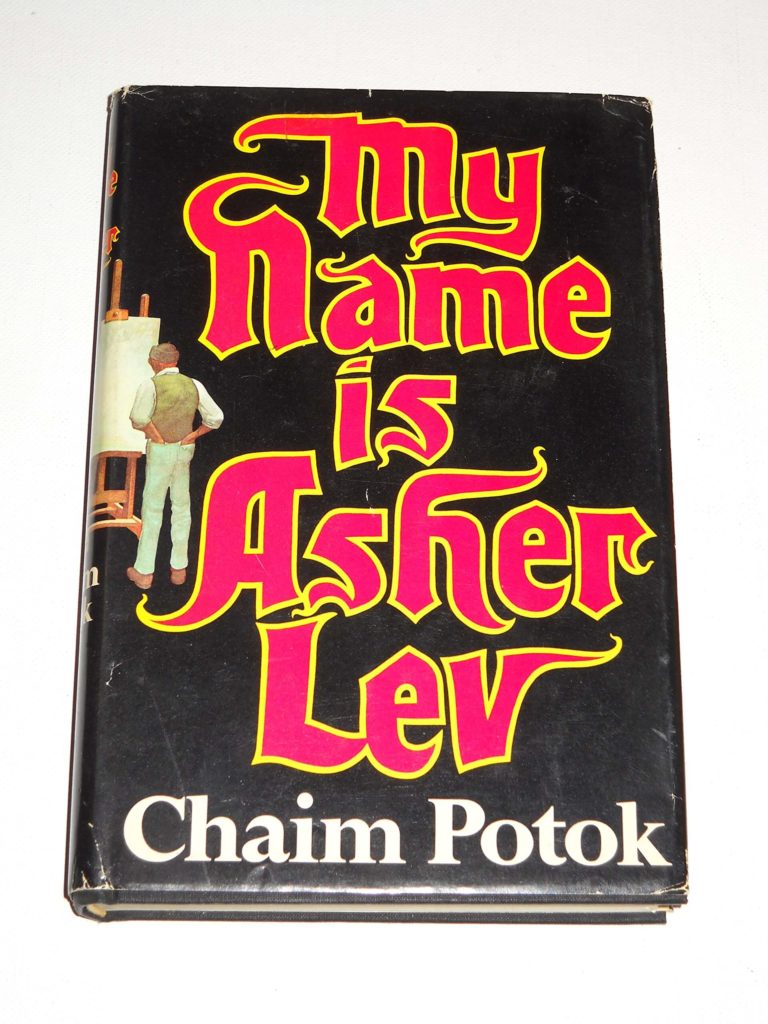
What if you’re looking for a stimulating read, a story about an inner struggle between what one actually is and what society requires him to be?
Chaim Potok, an American Rabbi and author, tells an extremely deep and –in some ways– shocking story under the title of My Name Is Asher Lev. The main character is Asher, a Hasidic Jewish boy, living in New York City at the end of the 20th century. He grows up as a young man with both a strong religious desire and an incredible artistic talent. However, his extreme orthodox community never stops repressing his talent. As a matter of fact, the traditional Jewish culture does not admit figurative representations, in particular religious ones. Following the example of the famous masters of the past, Asher feels the urgency to face the theme of the Crucifixion. Therefore, he realizes the modern Brooklyn Crucifixion leading him to blasphemy and causing a scandal in his community.
The man cannot ignore his strong tradition, but equally he cannot betray himself and his artistic vocation. This is the main struggle of the book, a tension between conflicting traditions: art versus society/religion.
The novel can also be seen as a Bildungsroman, and it is a bright vision on art, people and their difficult relationship. Read it if you want to discover a brand new world, to feel emotions, and to reflect a lot.
In case this precious book was not enough, Potok further developed the story of Asher in a sequel, The Gift of Asher Lev.
Your Turn: Drawing on the Right Side of the Brain
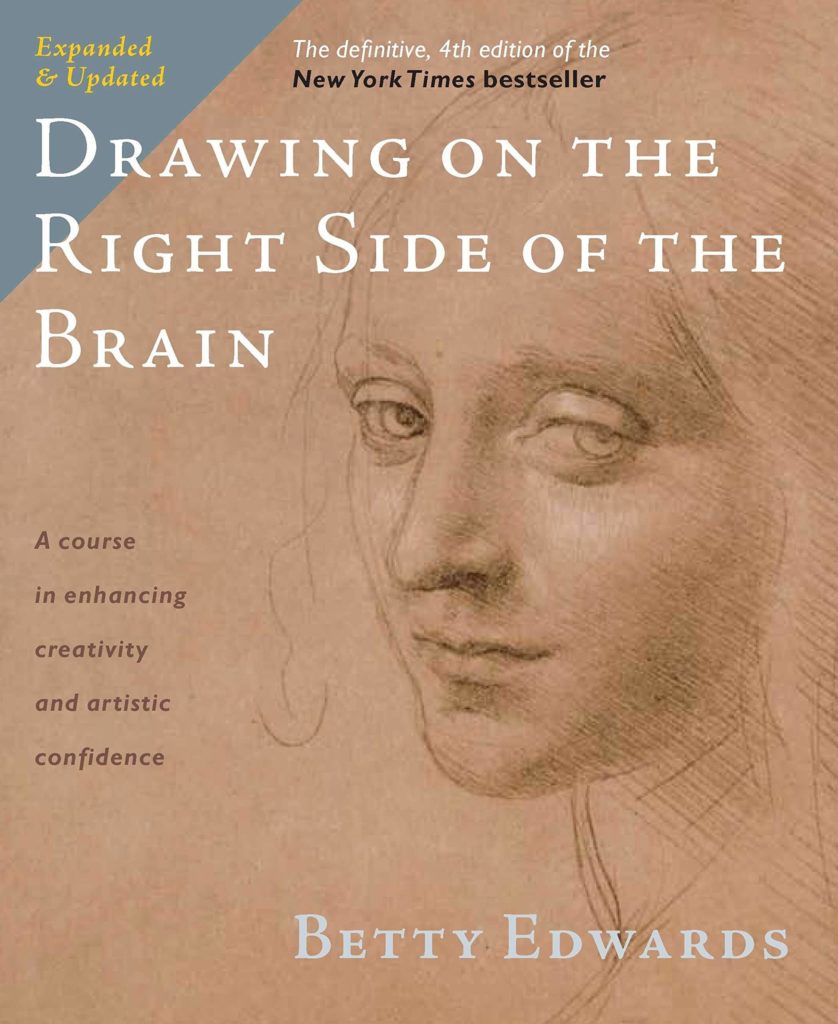
Reading is OK, but what about action? This book is the right choice for people who would like to make some art themselves.
The book, by Dr. Edwards, guides the reader-artist to the realization of drawings through the use of successful techniques for “seeing”. It is the ideal tool for beginners. It may also be a useful refresher for anyone who would like to sharpen their technique.
The fundamental concepts of the book are based on a famous work of Dr. R.W. Sperry, neuropsychologist and neurobiologist. His research focused on the lateralization of skills in the brain: verbal, analytic, and sequential functions, for most individuals mainly located in the left hemisphere; and visual, spatial and perceptual functions, generally located in the right hemisphere. The majority of everyday activities require both sides, “L-mode” and “R-mode”, and the brain can “work as a whole”. However, there are a few activities, which theoretically require mainly one mode, like drawing.
The author tried to revolutionize the way to draw by using this idea. She wanted to bypass the predominant “verbal L-mode”, in order to let it no longer interfere with the R-sided-only process of drawing. For example: when drawing by copying an upside-down subject, the artist somewhat “mutes” the L-mode. It is too difficult for it to nominate the subject and its parts because recognition is not straightforward. This allows a sort of “liberation” of the R-mode.
That’s not all. Dr. Edwards also explains that drawing is a global skill like walking or riding a bike. Therefore, literally everyone can learn how to draw, if they choose to dedicate some time to it.
For the more motivated students, Dr. Edwards also organizes workshops (now virtual). Check out www.drawright.com!
All Together: The Art Book for Children
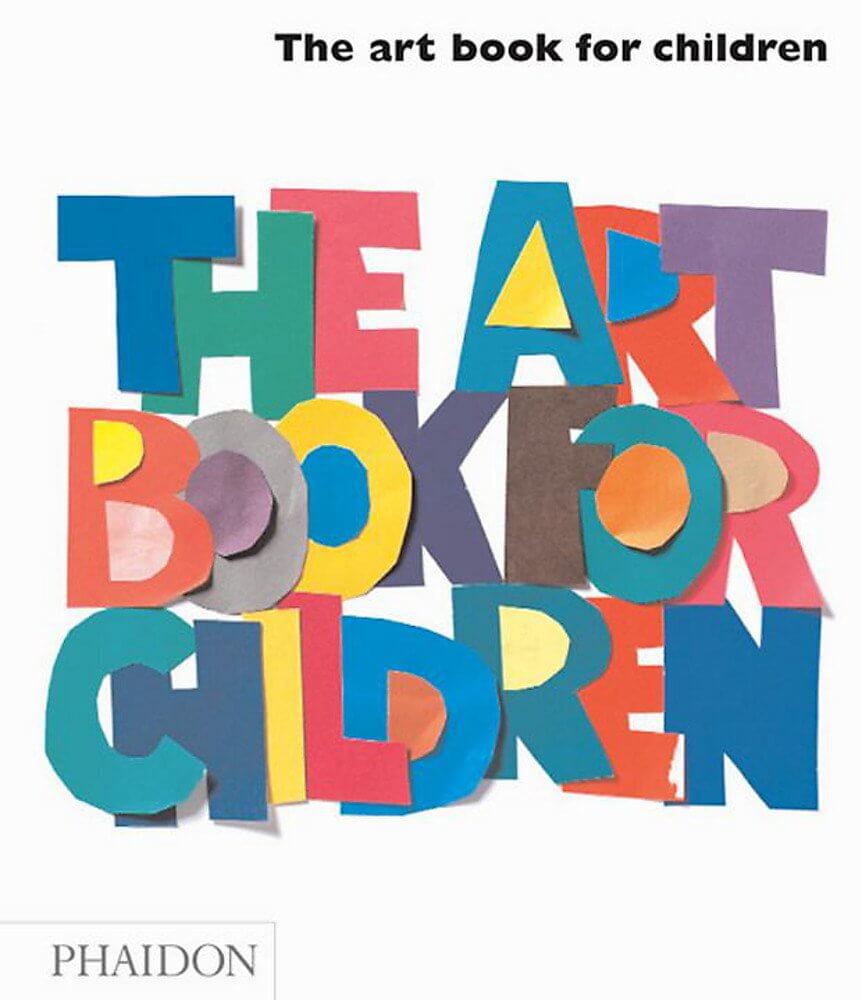
Of course, we also have a good option for children (and not-so-grown-ups)! Phaidon, the famous global publisher of the creative arts, after the success The Art Book decided to publish a counterpart for the youngest art historians, The Art Book for Children.
The book is a precise introduction to the world of art, perfectly enjoyable for parents and children alike. It includes 30 famous artists and their masterpieces from the 15th century to the present, whose stories are told in an engaging and modern way. The concept is user-friendly and especially child-friendly, with a double page dedicated to each artist. Images are in full-color, rich in close-ups. In addition, the original texts stimulate the reflection on techniques and subjects through questions and indications. Children are encouraged to observe and use their imagination to understand why a certain artist decided to create a specific artwork, at what time, and in which way.
Leonardo’s Mona Lisa, Andy Warhol’s Marilyn, and masterpieces by Van Gogh, Rembrandt, and Velazquez are just some works included in the broad selection of this must-have book.
Classic Pure History of Art: Lives
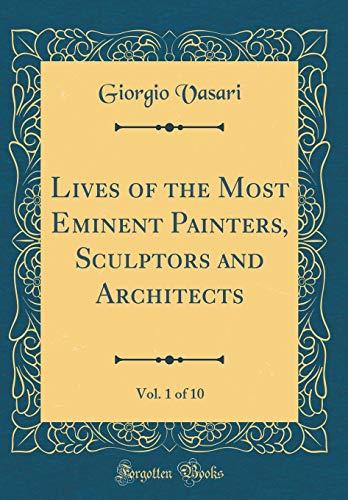
To conclude our book selection, we recommend a classic: The Lives of the Most Excellent Painters, Sculptors, and Architects, or just The Lives. It was originally written by 16th-century Italian painter and architect Giorgio Vasari.
Some modern authors consider this book to be the most read work of older literature of art. For others, it is “the first important book on art history”. It describes the lives of many very famous and lesser known artists and their works, with an encyclopedic precision and some inevitable (and somewhere funny) judgments by the author.
It will be a favorite companion for the methodical, classical reader who is interested in the history of art history. Be careful though, the complete collection could stay by your side for more than the whole summer! As a matter of fact, ten novel-long volumes constitute the full oeuvre. However, if you just want to sample it, many adaptations and selections of artists have been published through the decades. Don’t worry, they preserve the atmosphere of the 16th century!
Already finished? Read also five books about Van Gogh or the best books for art lovers!

